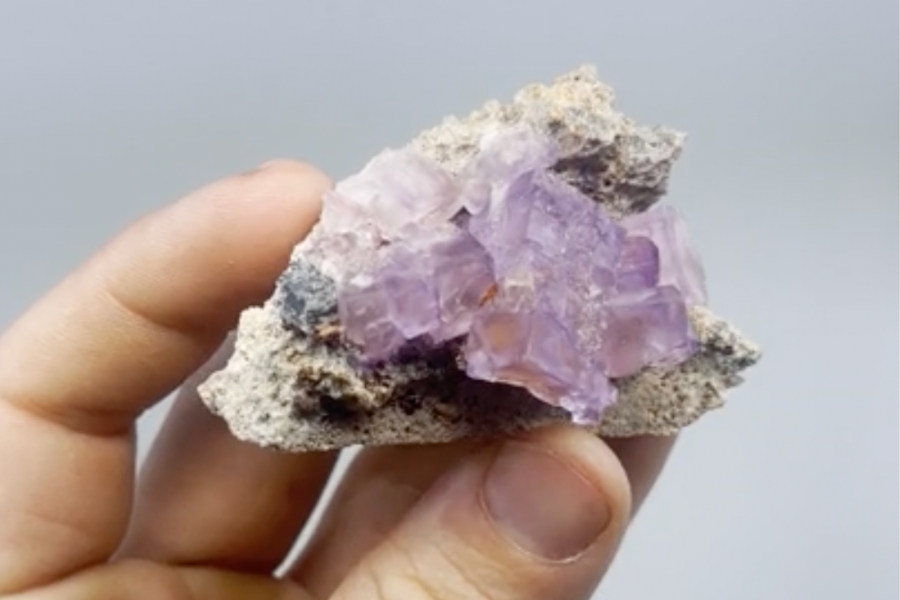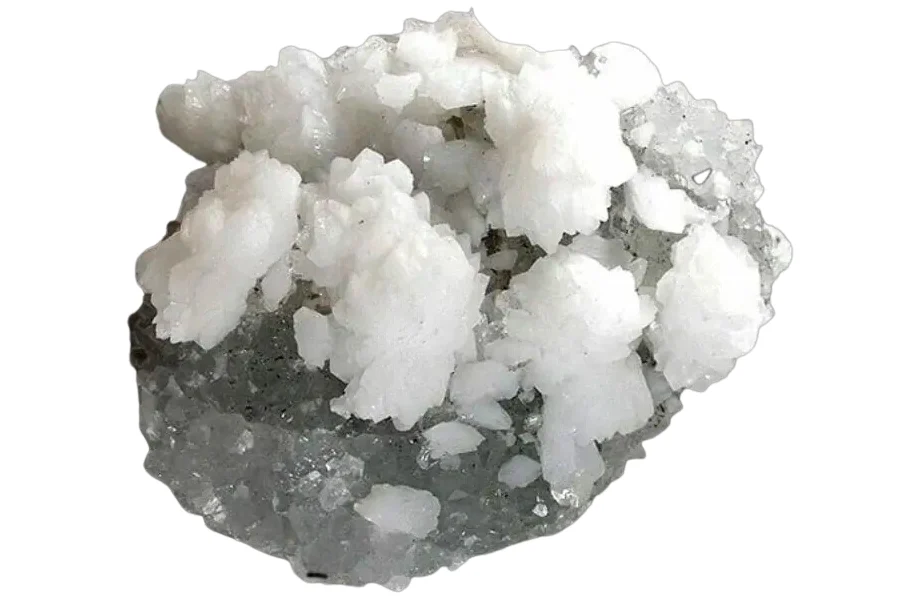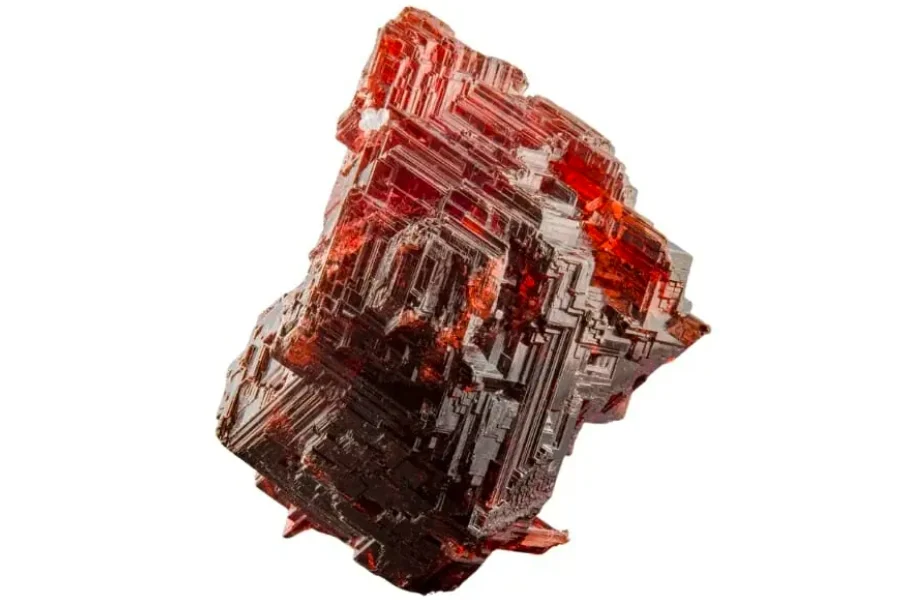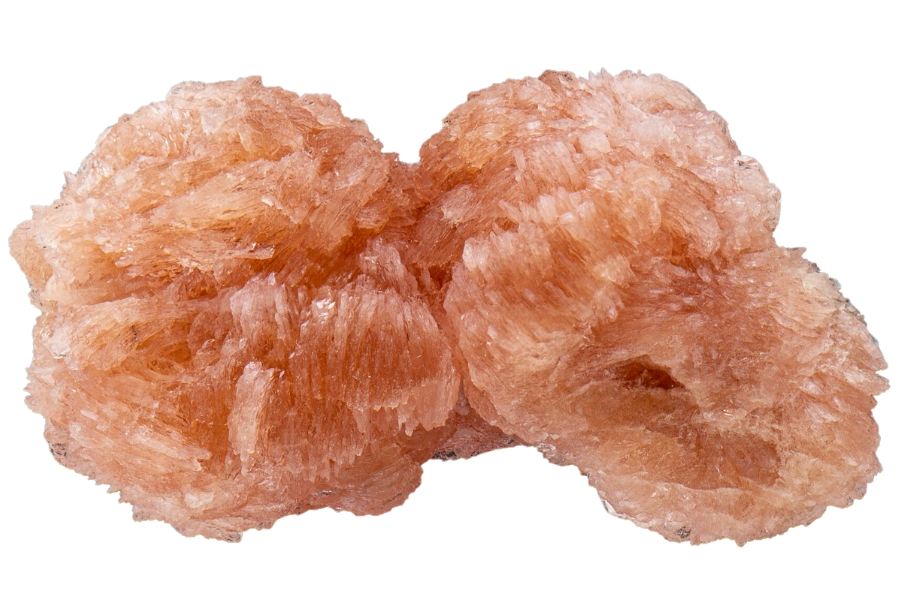Another exciting week of rockhounding has wrapped up and the Rock Chasing community has been busy! This week we’ll cover:
- Sweet lilac-colored fluorite
- White natural treasures that will dazzle you
- Is it tree agate or moss agate?
- Pearl’s price and value based on colors
- Easiest places to spot geodes in Wyoming
- New York’s most common rocks, minerals, gems, and crystals
- Why you should chase specificity when identifying a rock
- The most attractive gold you’ll see
All that and more below!
Win new gear in our community!
We are giving away new equipment every month to followers of our social channels. Every follow gives you another chance each month to win some great rock hammers, chisels, books, and other essential gear!
Click on the links below to sign up!
Find Of The Week

Today we have a sweet lilac-colored fluorite from Cave-in-Rock, Illinois.
Often referred to as the “Gem of the Rainbow,” fluorite is a visual marvel, captivating observers with its array of vibrant colors, ranging from clear to deep purples, greens, blues, and even yellows. Its crystalline structure allows it to refract light in a unique, mesmerizing way.
This gem is not particularly rare, but its unique beauty and luminance make it highly treasured among collectors and enthusiasts. Historically, its value has been attributed not just to its aesthetic appeal, but also to its use in manufacturing certain types of lenses and telescopes, given its optical clarity.
Fluorite’s formation is intriguing; it’s born from hydrothermal veins, often alongside quartz and calcite. Over time, as hot waters rich in fluorine and calcium circulate through rocks, they precipitate and form these crystalline deposits.
While fluorite can be found in various parts of the world, it is particularly abundant in regions such as China, Mexico, and parts of the United States. Each location lends a unique hue and characteristic to it, making the act of sourcing and collecting this gem an exciting journey.
If you have any new finds you’d like to share with the Rock Chasing community please send them to communitysubmissions@rockchasing.com. We would love to share and will happily give you credit!
White Rocks, Minerals, Gems, And Crystals That Will Dazzle You

White rocks, minerals, gems, and crystals are simply elegant! With their brilliant and pristine appearance, they’re sure to turn heads and steal the show.
They’re like diamonds in the rough, waiting to be discovered and appreciated for their beauty. And once you find them, you’re sure to be captivated by the allure of these magnificent specimens.
Each one has its own unique story to tell, whether it’s the story of how it was formed deep within the Earth’s crust, or how it’s been shaped and polished by the elements over time. And each one has its own special beauty, too!
If you’re looking for a little bit of elegance in your life, here’s an article that will give you a closer look at the world of white rocks, minerals, gems, and crystals. You never know what you might discover!
New York’s Most Common Rocks, Minerals, Gems, And Crystals

This state is a true gem, boasting an extraordinary variety of geological treasures that will leave you in awe.
From the towering skyscrapers of Manhattan to the serene shores of Long Island, the Empire State boasts of a jaw-dropping variety of geological wonders that will blow your mind.
As we delve into this fascinating realm, we’ll uncover the stories behind these geological marvels. Whether you’re an aspiring geologist or someone who’s always been interested in the beauty of the Earth, you’re in for a treat!
Community Tip Of The Week

Every week one of our members share a valuable tip or a big mistake they’ve made in their rockhounding journey. If you have a tip or mistake you’d like to share email us at communitysubmissions@rockchasing.com
This week’s tip comes from Brian R. in Denver Colorado:
When you ask for advice on identifying a rock, make sure you get an answer that’s as specific as possible.
Always strive for specificity when asking for advice on rock identification. Imagine you’re on a field trip and stumble upon a mesmerizing green specimen. Someone says, “Oh, that’s just some green mineral.” Now compare it with, “That looks like a chromium-rich diopside!” Which one ignites your curiosity more?
When you get a vague answer, it’s like receiving a puzzle with half the pieces missing. But a specific identification? That’s a treasure map with a bright red “X.”
Not only does it allow you to dive deeper into your find’s history, properties, and formation process, but it also sharpens your identification skills for future adventures. Over time, you’ll begin to spot the subtle differences between, say, a serpentine and a jade, or a pyrite and gold.
A specific also answer opens doors to joining fascinating conversations with fellow rockhounds. It fosters a sense of camaraderie and shared passion. So, always chase precision!
Every rock has a tale, and the more specific you are, the clearer and more captivating that tale becomes.
Kevin
The Most Attractive Gold You’ll See

When you close your eyes and think of raw gold, this great-looking gold specimen is surely near what gets to your mind.
As an emblem of opulence and luxury, gold has been cherished throughout history for its radiant beauty and unmatched luster. This precious metal, with its sun-kissed hue, has a timeless allure that has fascinated civilizations for millennia.
Despite its widespread use in jewelry and currency, gold is a relatively rare mineral, which only adds to its desirability and high value. Formed deep within the Earth’s crust under intense heat and pressure, it is brought closer to the surface through volcanic activity.
Gold is commonly found in veins within quartz rocks, and in alluvial deposits where the elemental gold is separated from rocks and carried by rivers to form nuggets. Notable deposits of gold can be found in regions of South Africa, Australia, and the Western United States, among others.
Beyond its aesthetic and economic worth, gold possesses unique properties: it is highly resistant to tarnish and corrosion, making it an enduring symbol of permanence.


